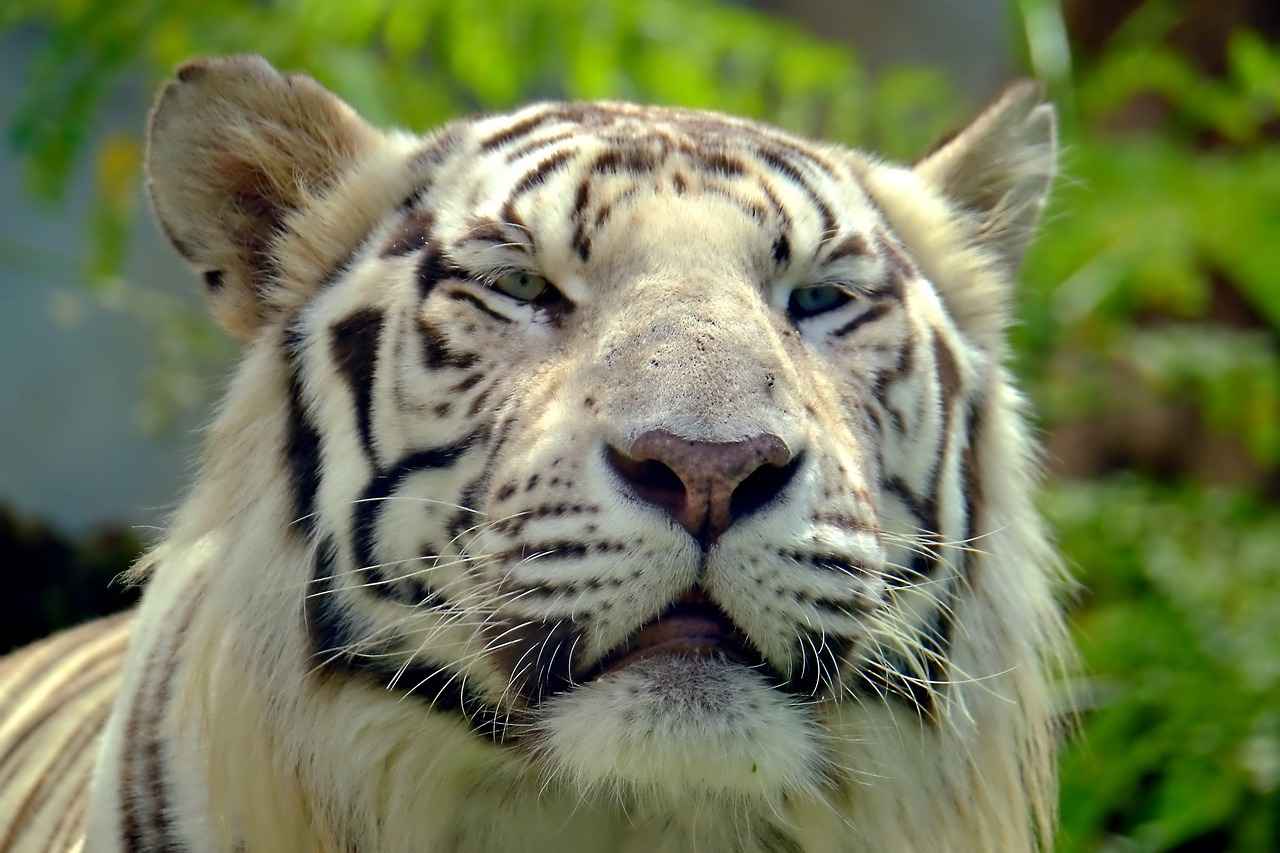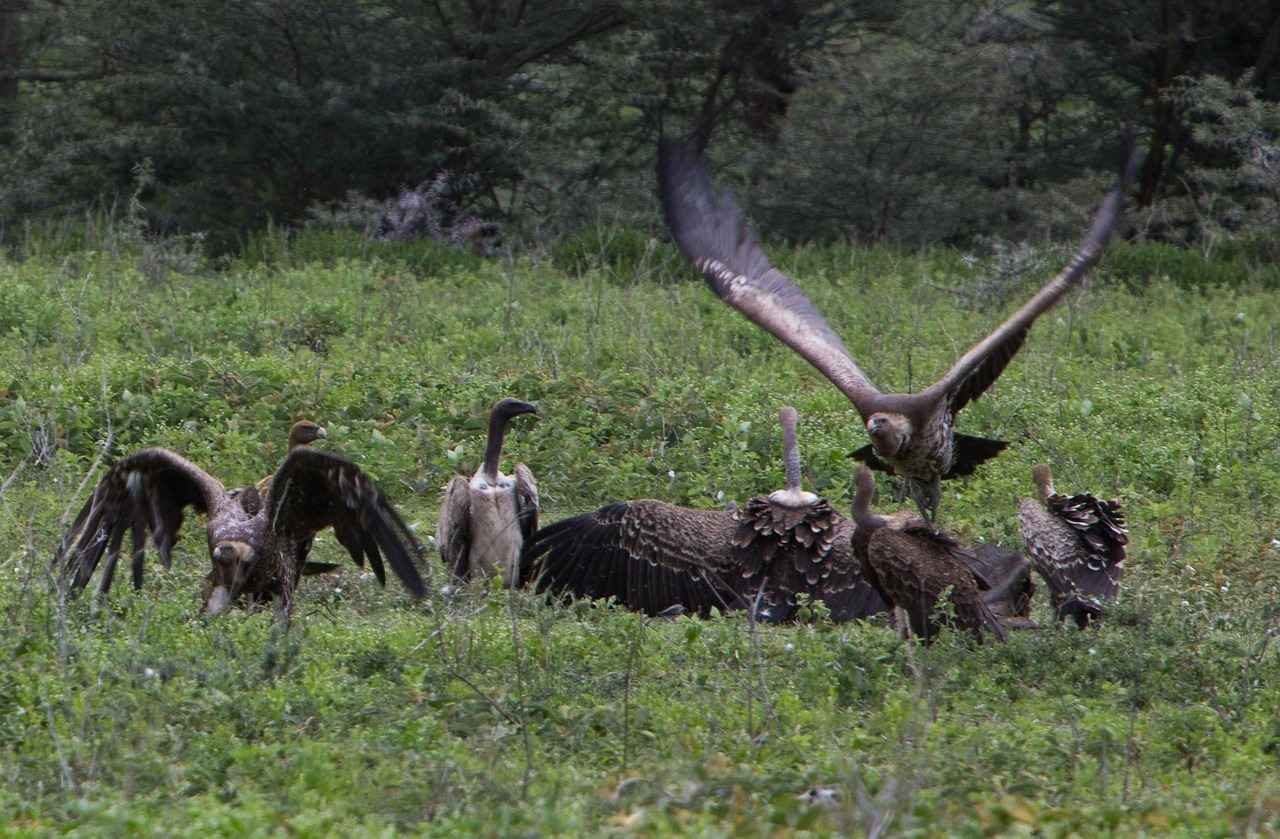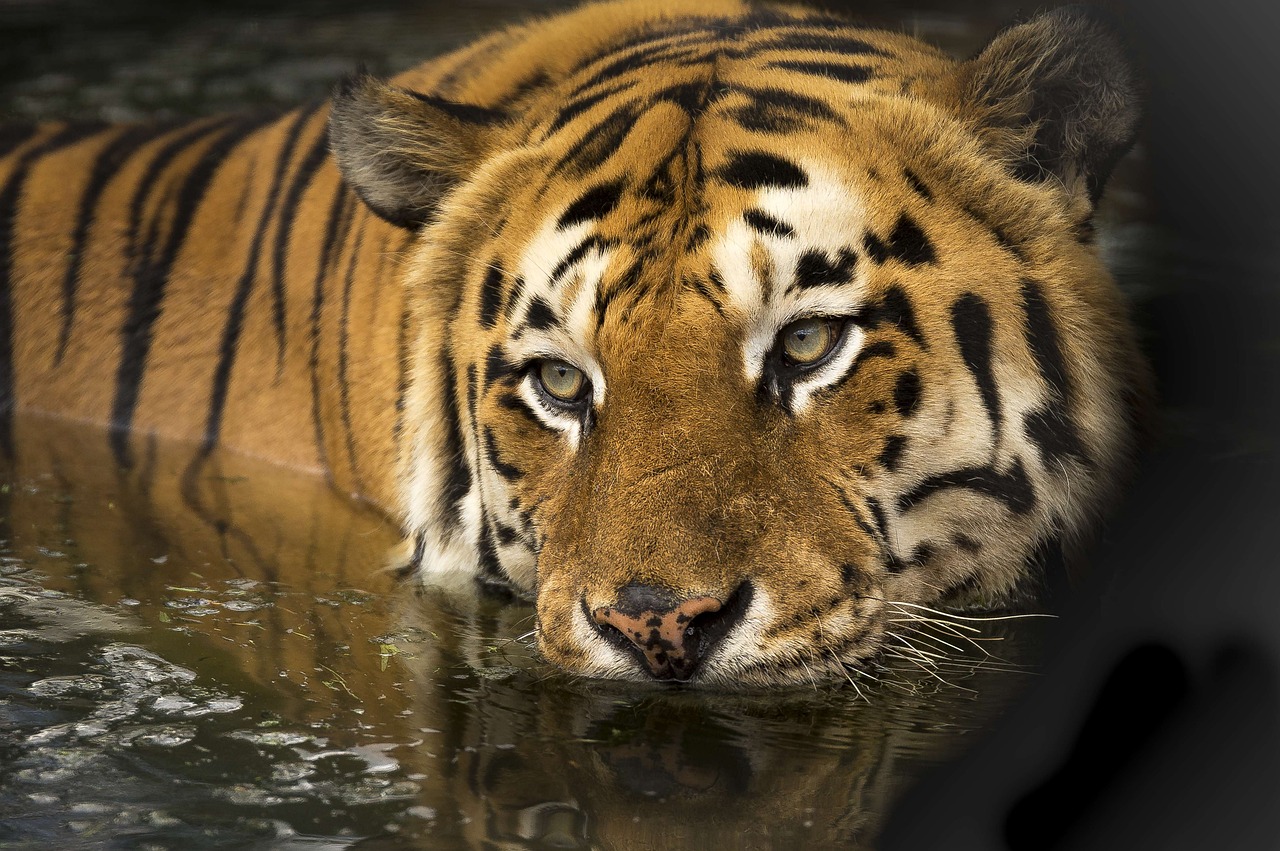This article delves into the rich wildlife and stunning natural landscapes of West Bengal, showcasing its national parks, remarkable species, and ongoing conservation efforts that make it a premier destination for wildlife enthusiasts.
1. Introduction to West Bengal’s Wildlife
West Bengal is home to a diverse array of wildlife, making it a sanctuary for nature lovers. The state’s varied ecosystems, ranging from dense forests to wetlands, support a plethora of flora and fauna, attracting visitors from across the globe.
2. Major National Parks in West Bengal
The state features several renowned national parks, each offering unique wildlife experiences. These parks play a crucial role in conservation and provide excellent opportunities for eco-tourism.
- Sundarbans National Park: A UNESCO World Heritage Site, famous for its mangrove forests and the Royal Bengal Tiger.
- Buxa Tiger Reserve: Known for its population of tigers and diverse bird species.
3. Unique Wildlife Species
West Bengal is home to numerous unique and endangered species, reinforcing its reputation as a biodiversity hotspot.
- Endangered Species: The Bengal tiger and the one-horned rhinoceros are vital to the region’s ecological balance.
- Bird Watching Opportunities: The state attracts ornithologists with its variety of migratory and unique avian species.
4. Conservation Efforts in West Bengal
Conservation initiatives in West Bengal aim to protect its rich biodiversity, involving local communities and government organizations in sustainable wildlife management.
- Role of Local Communities: Local residents engage in awareness programs and sustainable practices that benefit both wildlife and eco-tourism.
- Government Initiatives: Various policies focus on habitat restoration and anti-poaching measures to safeguard wildlife.
5. Best Time to Visit West Bengal for Wildlife Watching
Understanding the optimal times to visit can significantly enhance wildlife viewing experiences. Seasonal changes influence animal behavior and visibility, making timing crucial for enthusiasts.
6. Conclusion: The Future of Wildlife in West Bengal
The future of wildlife in West Bengal hinges on continued conservation efforts, community involvement, and sustainable tourism practices, ensuring this paradise remains a sanctuary for wildlife lovers.

1. Introduction to West Bengal’s Wildlife
West Bengal is a treasure trove of biodiversity, offering a unique blend of ecosystems that cater to a wide variety of wildlife enthusiasts. This Indian state is not only known for its rich cultural heritage but also for its stunning natural landscapes that serve as habitats for countless species. From the dense forests of the Himalayas to the sprawling mangroves of the Sundarbans, West Bengal presents a fascinating array of flora and fauna that captivates visitors and researchers alike.
The state’s geographical diversity plays a significant role in supporting its wildlife. The Himalayan foothills are home to various species of birds, mammals, and plants, while the wetlands and rivers provide critical habitats for aquatic life. Moreover, the coastal regions offer a unique ecosystem that supports both marine and terrestrial species.
One of the highlights of West Bengal’s wildlife is its status as a sanctuary for several endangered species. The Royal Bengal Tiger, for instance, roams the dense forests of the Sundarbans, symbolizing the state’s commitment to conservation. Additionally, the presence of the one-horned rhinoceros in the nearby regions further emphasizes the importance of West Bengal as a biodiversity hotspot.
As a result, West Bengal attracts not only tourists but also conservationists and researchers from around the globe. The state’s numerous national parks and wildlife sanctuaries provide opportunities for eco-tourism, allowing visitors to experience the rich wildlife while promoting conservation efforts.
In summary, West Bengal is a paradise for wildlife lovers, offering an unparalleled opportunity to explore its diverse ecosystems and unique species. By visiting and supporting conservation initiatives, individuals can contribute to the preservation of this natural heritage for future generations.

2. Major National Parks in West Bengal
Major National Parks in West Bengal are not just vast stretches of land; they are sanctuaries that cradle some of the most diverse wildlife on the planet. Each park offers a unique glimpse into the natural world, providing essential habitats for a variety of species and opportunities for eco-tourism.
- Sundarbans National Park: This UNESCO World Heritage Site is famous for its intricate mangrove forests and the elusive Royal Bengal Tiger. The unique ecosystem here supports a rich biodiversity, including the endangered Ganges River dolphin and various species of birds.
- Buxa Tiger Reserve: Nestled in the foothills of the Himalayas, Buxa is known for its thriving tiger population and numerous bird species. The reserve is a crucial area for conservation and offers trekking routes that attract adventure seekers.
- Gorumara National Park: Known for its population of Indian rhinoceroses, Gorumara is a picturesque park featuring grasslands, forests, and rivers. The park is also home to a variety of birds, making it a hotspot for bird watchers.
- Jaldapara National Park: This park is famous for its elephants and one-horned rhinoceroses. Jaldapara’s lush grasslands and dense forests provide a perfect habitat for wildlife enthusiasts looking to experience the rich biodiversity of the region.
The importance of these parks extends beyond their ecological value. They serve as vital resources for local communities and contribute significantly to the economy through eco-tourism. By attracting visitors, these parks create awareness about conservation and the need to protect our natural heritage.
In conclusion, the major national parks in West Bengal are essential not only for the wildlife they protect but also for the educational and eco-tourism opportunities they provide. These parks are a testament to the state’s commitment to preserving its natural resources while offering unforgettable experiences to visitors.
2.1 Sundarbans National Park
Sundarbans National Park is an extraordinary destination, renowned for its breathtaking mangrove forests and the majestic Royal Bengal Tiger. As a designated UNESCO World Heritage Site, this park stands out as a vital ecological treasure, showcasing one of the largest and most unique mangrove ecosystems in the world.
The Sundarbans cover an expansive area of approximately 10,000 square kilometers, straddling the border between India and Bangladesh. This rich biodiversity hotspot is home to a myriad of species, making it a paradise for wildlife enthusiasts and researchers alike.
| Species | Status | Habitat |
|---|---|---|
| Royal Bengal Tiger | Endangered | Mangroves, estuaries |
| Ganges River Dolphin | Endangered | Freshwater rivers |
| Saltwater Crocodile | Vulnerable | Brackish waters |
| Various Bird Species | Varied | Mangroves, mudflats |
The park’s unique ecosystem is characterized by its intricate network of tidal waterways, mudflats, and islands, providing a habitat for a diverse range of flora and fauna. The mangrove trees play a crucial role in coastal protection and serve as a breeding ground for numerous aquatic species.
In addition to its wildlife, Sundarbans National Park is also a hub for eco-tourism. Visitors can engage in guided tours, bird watching, and boat rides, allowing for an immersive experience in this unique habitat. These initiatives not only promote sustainable tourism but also raise awareness about the importance of conservation efforts.
As the future of the Sundarbans remains uncertain due to climate change and human activities, ongoing conservation efforts are essential to protect this remarkable ecosystem. By fostering a connection between visitors and the natural world, we can ensure that the beauty of Sundarbans National Park continues to thrive for generations to come.
2.1.1 Flora and Fauna of Sundarbans
The Sundarbans, the largest mangrove forest in the world, is a UNESCO World Heritage Site that plays a crucial role in preserving biodiversity. This unique ecosystem is home to a variety of species, making it a vital area for wildlife conservation.
Among the notable inhabitants of the Sundarbans is the endangered Ganges River dolphin. This aquatic mammal is known for its distinctive pink hue and plays a significant role in the aquatic ecosystem. The presence of the Ganges River dolphin indicates a healthy aquatic environment, as they are sensitive to changes in water quality.
Additionally, the Sundarbans is famous for its population of saltwater crocodiles. These formidable reptiles are among the largest in the world and are essential for maintaining the ecological balance within their habitat. They are apex predators, helping to regulate the populations of various fish and other marine species.
The flora of the Sundarbans is just as remarkable as its fauna. The mangrove trees here, such as Rhizophora and Avicennia, have adapted to thrive in the brackish waters. Their roots not only stabilize the coastline but also provide a habitat for numerous species of fish and crustaceans.
| Species | Conservation Status |
|---|---|
| Ganges River Dolphin | Endangered |
| Saltwater Crocodile | Vulnerable |
The Sundarbans is not just a sanctuary for these species; it is also a critical area for conservation efforts. Local communities are increasingly involved in protecting this unique ecosystem, promoting sustainable practices that benefit both wildlife and human populations.
In conclusion, the Sundarbans is a treasure trove of biodiversity, offering a glimpse into the intricate relationships between species and their habitats. Understanding and protecting this delicate ecosystem is essential for ensuring the survival of its unique inhabitants.
2.1.2 Eco-Tourism in Sundarbans
Eco-Tourism in the Sundarbans plays a crucial role in promoting sustainable travel while offering visitors a unique opportunity to learn about the region’s rich biodiversity and the pressing need for conservation efforts. The Sundarbans, renowned for its intricate network of mangrove forests, is not only home to the majestic Royal Bengal Tiger but also hosts a myriad of other species, making it a biodiversity hotspot.
Through eco-tourism initiatives, visitors can engage in activities that respect the environment and support local communities. These initiatives often include guided tours led by knowledgeable locals who share insights into the ecosystem’s delicate balance and the importance of each species within it. By participating in these tours, tourists not only enjoy the stunning landscapes but also contribute to the conservation of this unique habitat.
| Eco-Tourism Activities | Description |
|---|---|
| Wildlife Safaris | Guided tours through the mangroves to spot various species, including tigers and dolphins. |
| Bird Watching | Opportunities to observe migratory and resident bird species in their natural habitat. |
| Cultural Tours | Visits to local communities to learn about their traditions and conservation efforts. |
Moreover, eco-tourism in the Sundarbans fosters a sense of responsibility among tourists. By understanding the impact of their presence, visitors are encouraged to adopt sustainable practices, such as minimizing waste and respecting wildlife. This educational aspect is vital, as it empowers tourists to become advocates for conservation upon returning home.
In conclusion, eco-tourism in the Sundarbans not only enhances the visitor experience but also plays a pivotal role in the ongoing conservation efforts in the region. By promoting awareness and sustainable practices, these initiatives ensure that the breathtaking beauty and biodiversity of the Sundarbans can be preserved for future generations.
2.2 Buxa Tiger Reserve
Buxa Tiger Reserve is a significant wildlife sanctuary located in the northern part of West Bengal, India. It is renowned not only for its thriving population of Royal Bengal Tigers but also for its rich biodiversity, making it an essential destination for wildlife enthusiasts and nature lovers alike.
This reserve spans over 760 square kilometers and is nestled in the foothills of the Himalayas, offering a unique blend of hilly terrain and dense forests. The varied landscapes provide a habitat for numerous species, including over 200 species of birds, making it a birdwatcher’s paradise.
One of the main attractions of Buxa Tiger Reserve is the Buxa Fort, which holds historical significance and provides stunning views of the surrounding landscape. Visitors often combine their wildlife exploration with a touch of history, enhancing their overall experience.
- Flora: The reserve is home to a diverse range of flora, including tropical and subtropical forests, which support various wildlife species.
- Fauna: Apart from tigers, the reserve is inhabited by elephants, leopards, and several deer species, contributing to its ecological richness.
- Bird Watching: The diverse avian population includes species like the Great Hornbill and various migratory birds, attracting ornithologists from around the globe.
Conservation efforts in Buxa Tiger Reserve are critical, as the area faces challenges such as poaching and habitat loss. Local communities are involved in conservation initiatives, which help promote sustainable tourism and protect the region’s wildlife.
In conclusion, Buxa Tiger Reserve stands out as a remarkable wildlife haven in West Bengal. Its rich biodiversity, coupled with conservation efforts and community involvement, ensures that it remains a vital sanctuary for wildlife enthusiasts and a crucial area for ecological balance.

3. Unique Wildlife Species
West Bengal is renowned for its rich biodiversity, hosting a variety of unique and endangered species that contribute significantly to its ecological balance. The state’s diverse habitats range from lush forests to wetlands, providing a sanctuary for both terrestrial and aquatic wildlife.
3.1 Endangered Species of West Bengal
Among the most notable endangered species are the Bengal tiger and the one-horned rhinoceros. These majestic animals are not only iconic symbols of India’s wildlife but also play a crucial role in maintaining the ecological integrity of their respective habitats. The Bengal tiger, primarily found in the Sundarbans, is adapted to the unique mangrove ecosystem, while the one-horned rhinoceros thrives in the grasslands of Jaldapara National Park.
3.2 Bird Watching Opportunities
West Bengal is a paradise for bird watchers, offering a myriad of opportunities to observe both migratory and resident bird species. The Bharatpur Bird Sanctuary and the Sundarbans are hotspots for ornithologists, featuring a range of birds from the majestic Brahminy Kite to the vibrant Indian Pitta. The diverse ecosystems provide critical habitats that attract a variety of avian species throughout the year.
3.3 Reptiles and Aquatic Life
The state’s waterways are home to several unique reptiles, including the Ganges River dolphin and various species of turtles. The Sundarbans mangroves also shelter the elusive saltwater crocodile, a key predator in the ecosystem. These species are vital for maintaining the health of aquatic environments and are indicators of ecological well-being.
3.4 Conservation Significance
The presence of these unique species underscores the importance of conservation efforts in West Bengal. Protecting their habitats through sustainable practices is essential for ensuring their survival and maintaining the region’s biodiversity. Local communities and government initiatives are increasingly focused on preserving these species, recognizing their ecological and cultural significance.
In conclusion, West Bengal’s unique wildlife species are integral to the state’s identity and ecological health. Continued efforts in conservation and sustainable tourism will help protect these remarkable creatures for future generations.
3.1 Endangered Species of West Bengal
Endangered Species of West Bengal play a crucial role in maintaining the ecological balance of the region. Among the most notable are the Bengal tiger and the one-horned rhinoceros, both of which are not only iconic symbols of wildlife conservation but also essential to the health of their respective ecosystems.
The Bengal tiger (Panthera tigris tigris) is a majestic predator that inhabits the dense forests and mangroves of West Bengal, particularly in the Sundarbans National Park. This species is critically endangered, with habitat loss and poaching posing significant threats to its survival. Conservation efforts, including anti-poaching initiatives and habitat restoration, are vital to ensuring the future of these magnificent animals.
Similarly, the one-horned rhinoceros (Rhinoceros unicornis) is another endangered species that finds refuge in the grasslands of Jaldapara National Park and Gorumara National Park. With its distinct single horn, this rhinoceros is a symbol of wildlife conservation efforts in India. The population of one-horned rhinoceroses has seen a gradual increase due to dedicated conservation programs aimed at protecting their habitats and mitigating human-wildlife conflict.
Both of these species are vital to the ecological balance of West Bengal. The Bengal tiger, as an apex predator, helps regulate prey populations, while the one-horned rhinoceros contributes to the health of grassland ecosystems through grazing, which promotes biodiversity. Protecting these endangered species is not just about preserving wildlife; it is also about maintaining the natural heritage and ecological integrity of West Bengal.
In conclusion, the conservation of the Bengal tiger and the one-horned rhinoceros is essential for the ecological health of West Bengal. Ongoing efforts by the government and local communities are crucial in ensuring that these species continue to thrive in their natural habitats for generations to come.
3.2 Bird Watching Opportunities
Bird Watching Opportunities in West Bengal
West Bengal stands out as a bird watcher’s paradise, offering a remarkable variety of habitats that attract both migratory and resident bird species. The state’s rich biodiversity and unique ecosystems create an ideal environment for ornithologists and nature enthusiasts alike. From the lush mangroves of the Sundarbans to the serene wetlands of the Dooars, West Bengal is a treasure trove for bird lovers.
- Migratory Birds: Every year, thousands of migratory birds flock to West Bengal, especially during the winter months. Species such as the Bar-headed Goose and the Greater Flamingo can be spotted in various wetlands, making it a prime location for birding.
- Unique Avian Species: The region is home to several unique bird species, including the endangered White-bellied Sea Eagle and the Indian Pitta. These birds can be observed in their natural habitats, providing a thrilling experience for bird watchers.
- Bird Sanctuaries: West Bengal boasts numerous bird sanctuaries like the Chandipur Bird Sanctuary and the East Kolkata Wetlands, which serve as critical habitats for various bird species. These sanctuaries are well-maintained and offer excellent facilities for bird watching.
Moreover, the state’s diverse landscapes—from forests to coastal areas—provide ample opportunities for birding enthusiasts to explore. The best times for bird watching are typically early mornings and late afternoons, when birds are most active.
In conclusion, West Bengal’s diverse habitats and rich avian life make it an exceptional destination for bird watchers. Whether you are a seasoned ornithologist or a casual bird lover, the state’s unique offerings will undoubtedly captivate your interest and enhance your bird watching experience.

4. Conservation Efforts in West Bengal
Conservation Efforts in West Bengal
West Bengal, a state rich in biodiversity, is home to a variety of ecosystems that support an extensive range of flora and fauna. To protect this natural wealth, numerous conservation initiatives have been implemented, focusing on sustainable practices and community involvement.
The collaboration between local communities and government organizations is essential for the success of these initiatives. Local residents are often the first line of defense in wildlife protection, participating actively in awareness programs that educate them about the importance of preserving their natural heritage. These programs also promote sustainable practices that allow communities to benefit from eco-tourism while ensuring that wildlife habitats are not compromised.
| Conservation Initiative | Description |
|---|---|
| Community Awareness Programs | Educating locals about the importance of biodiversity and sustainable practices. |
| Habitat Restoration Projects | Efforts to restore degraded habitats to their natural state. |
| Anti-Poaching Measures | Strategies implemented to prevent poaching and illegal wildlife trade. |
The West Bengal government has also taken significant steps to protect wildlife through various policies and programs. These efforts include:
- Establishment of Protected Areas: Designating national parks and reserves to safeguard critical habitats.
- Wildlife Protection Laws: Enforcing laws that prohibit poaching and protect endangered species.
- Research and Monitoring: Conducting studies to monitor wildlife populations and assess the health of ecosystems.
In conclusion, the future of wildlife in West Bengal depends on the continued collaboration between local communities and government bodies. By fostering a culture of conservation and sustainable tourism, West Bengal can ensure that its rich biodiversity is preserved for future generations, making it a true paradise for wildlife lovers.
4.1 Role of Local Communities
In the realm of wildlife conservation, local communities are not just passive observers but active participants. Their involvement is essential for the success of conservation efforts, particularly in regions rich in biodiversity like West Bengal. These communities bring invaluable knowledge about the local ecosystem, having lived in harmony with nature for generations.
One of the primary ways local communities contribute is through awareness programs. These initiatives educate residents and visitors alike about the importance of protecting wildlife and the delicate balance of ecosystems. By fostering a sense of responsibility and stewardship, communities help to cultivate a culture of conservation.
Moreover, sustainable practices are integral to their role. Many local communities have adopted methods that not only protect wildlife but also enhance their own livelihoods. For instance, initiatives such as community-based tourism allow locals to benefit from eco-tourism while ensuring that wildlife habitats are preserved. This symbiotic relationship between conservation and community welfare is crucial, as it aligns economic incentives with environmental goals.
Local artisans and guides often showcase their skills, providing unique experiences for tourists while promoting the region’s natural heritage. This not only generates income but also empowers communities to take ownership of their resources, leading to greater commitment towards conservation efforts.
Furthermore, collaboration with conservation organizations and government bodies amplifies their impact. By participating in conservation programs, local communities can access training and resources that enhance their capabilities to protect wildlife effectively.
In conclusion, the role of local communities in wildlife conservation is multifaceted and indispensable. Their active participation in awareness programs and sustainable practices not only protects wildlife but also fosters a thriving eco-tourism industry, ensuring that both nature and local livelihoods flourish.
4.2 Government Initiatives
The government of West Bengal has taken significant strides in implementing a range of policies and programs aimed at the protection and conservation of wildlife and their habitats. These initiatives are designed not only to safeguard endangered species but also to promote sustainable practices that benefit both the environment and local communities.
One of the primary focuses of these initiatives is habitat restoration. The government has recognized that healthy ecosystems are vital for the survival of various species. As a result, extensive efforts have been made to restore degraded habitats, particularly in areas that have been adversely affected by human activities. This restoration process includes:
- Reforestation: Planting native trees and vegetation to enhance biodiversity.
- Wetland Conservation: Protecting and rehabilitating wetlands that serve as crucial habitats for numerous species.
- Community Involvement: Engaging local populations in restoration projects to ensure sustainable practices are adopted and maintained.
In addition to habitat restoration, the West Bengal government has implemented stringent anti-poaching measures. Poaching remains a significant threat to wildlife, particularly for endangered species such as the Bengal tiger and the one-horned rhinoceros. To combat this, the government has:
- Increased Patrols: Deploying forest guards and surveillance technologies to monitor protected areas.
- Legal Framework: Strengthening laws and penalties associated with wildlife crimes to deter poaching.
- Awareness Campaigns: Educating the public about the importance of wildlife conservation and the ecological roles of various species.
Through these initiatives, the West Bengal government aims to create a sustainable environment that not only protects wildlife but also enhances the quality of life for local communities. By fostering a harmonious relationship between nature and people, West Bengal is paving the way for a brighter future for its rich biodiversity.

5. Best Time to Visit West Bengal for Wildlife Watching
Understanding the optimal times to visit West Bengal is essential for enhancing your wildlife viewing experiences. The state’s diverse ecosystems and seasonal changes significantly influence animal behavior, making timing crucial for wildlife enthusiasts.
- Winter (November to February): This season is ideal for wildlife watching as animals are more active and visible. The cooler temperatures encourage many species to roam, making it easier to spot them in their natural habitats.
- Spring (March to April): As the weather warms up, many migratory birds return to West Bengal. This is a prime time for bird watchers, as the parks are filled with vibrant avian life.
- Monsoon (June to September): While the rains can make wildlife harder to spot, this season brings lush greenery and a unique opportunity to see species that thrive in wet conditions. Some parks may have restricted access due to flooding, so planning is essential.
- Autumn (October): This transitional period is excellent for wildlife viewing as animals prepare for the upcoming winter. The visibility improves, and many species are seen foraging before the colder months.
Each season offers a unique perspective on the wildlife of West Bengal. For instance, visiting the Sundarbans National Park during winter allows you to witness the majestic Royal Bengal Tiger in its prime, while spring brings a colorful array of migratory birds to the wetlands.
Moreover, understanding the behavioral patterns of specific species can enhance your experience. For example, many mammals are more active during the early morning and late afternoon, making these times optimal for sightings.
In conclusion, by aligning your visit with the seasonal changes and animal behaviors, you can maximize your wildlife viewing opportunities in West Bengal. Whether you are a seasoned wildlife enthusiast or a casual visitor, timing your trip can make all the difference in experiencing the rich biodiversity this region has to offer.

6. Conclusion: The Future of Wildlife in West Bengal
The Future of Wildlife in West Bengal is a pressing concern that requires immediate action and sustained commitment. As one of the most biodiverse regions in India, West Bengal is home to a plethora of unique species and rich ecosystems. However, the survival of these natural treasures hinges on a multifaceted approach that includes conservation efforts, active community involvement, and the promotion of sustainable tourism practices.
To ensure a promising future for wildlife in West Bengal, it is essential to continue and enhance conservation initiatives. These efforts must focus on protecting habitats, preventing poaching, and restoring ecosystems that have been adversely affected by human activities. Engaging local communities in these initiatives is crucial, as they are often the first line of defense against environmental degradation. By involving them in conservation programs, we can foster a sense of ownership and responsibility towards wildlife protection.
Moreover, sustainable tourism can serve as a powerful tool for conservation. By promoting eco-friendly practices, we can attract responsible tourists who are willing to contribute to the local economy while minimizing their impact on the environment. This not only helps in funding conservation projects but also raises awareness about the importance of preserving wildlife. Visitors can participate in guided tours, wildlife photography, and educational workshops that highlight the significance of biodiversity.
In addition to these efforts, it is vital to leverage technology and research to monitor wildlife populations and habitat conditions. Innovative solutions such as camera traps and satellite tracking can provide valuable data that inform conservation strategies. Collaboration between government agencies, NGOs, and researchers will enhance the effectiveness of these initiatives.
In conclusion, the future of wildlife in West Bengal depends on a collective effort that integrates conservation, community engagement, and sustainable tourism. By working together, we can ensure that this paradise continues to thrive as a sanctuary for wildlife lovers and future generations.
Frequently Asked Questions
- What is the best time to visit West Bengal for wildlife watching?
The best time to visit West Bengal for wildlife watching is typically from November to February. During these months, the weather is cooler, and animals are more active, making it easier to spot them in their natural habitats.
- Are there any endangered species in West Bengal?
Yes, West Bengal is home to several endangered species, including the Bengal tiger and the one-horned rhinoceros. Conservation efforts are in place to protect these magnificent creatures and their habitats.
- What are the major national parks in West Bengal?
West Bengal boasts several major national parks, with the most notable being Sundarbans National Park and Buxa Tiger Reserve. Each park offers unique wildlife experiences and plays a crucial role in conservation.
- How can I participate in eco-tourism in West Bengal?
You can participate in eco-tourism by visiting national parks, staying at eco-friendly lodges, and engaging in activities that promote wildlife conservation. Look for tours that are run by local communities to ensure your visit supports sustainable practices.
- What role do local communities play in wildlife conservation?
Local communities are vital to wildlife conservation in West Bengal. They participate in awareness programs, sustainable practices, and eco-tourism initiatives, helping to protect wildlife while benefiting economically from conservation efforts.


























































